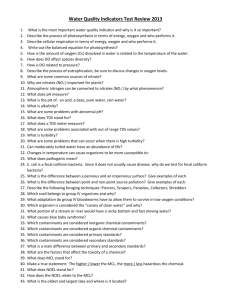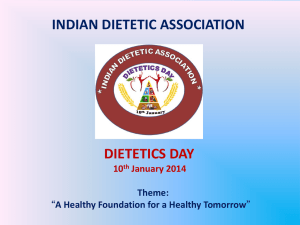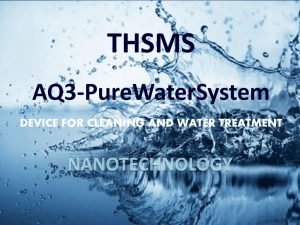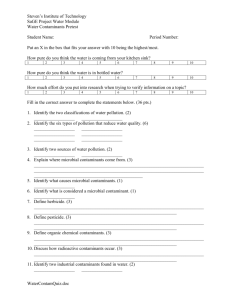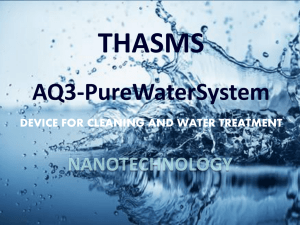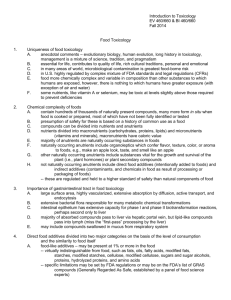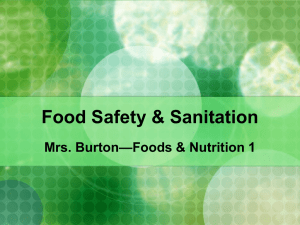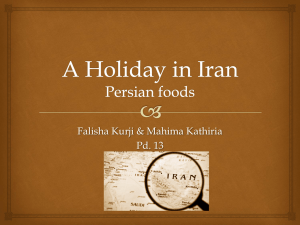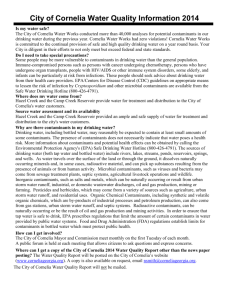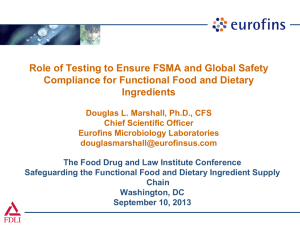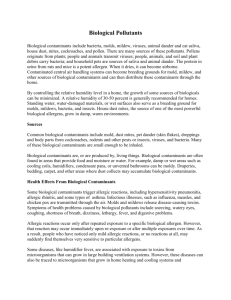Chemical Hazard Assessment at FDA
advertisement
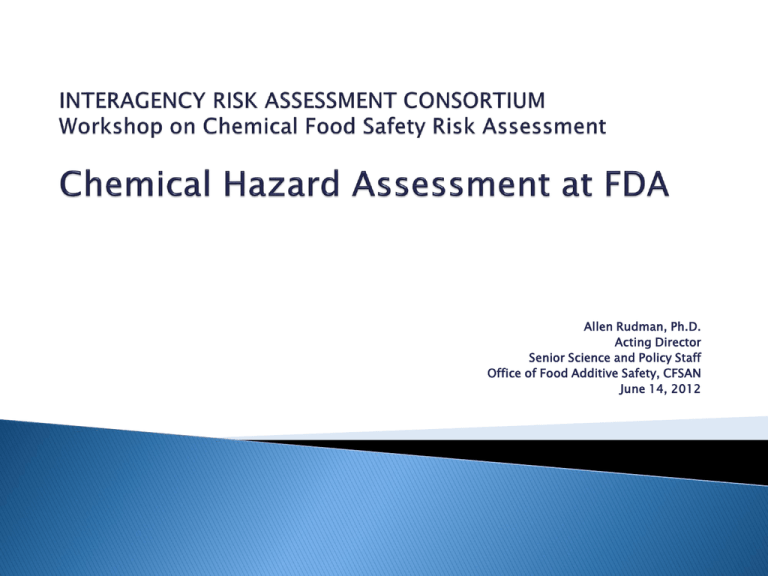
Allen Rudman, Ph.D. Acting Director Senior Science and Policy Staff Office of Food Additive Safety, CFSAN June 14, 2012 Food Additives ◦ Exposure is intentional ◦ Exposure can usually be controlled ◦ Approval contingent on adequate information from manufacturer Contaminants ◦ Exposure is normally unintentional ◦ Exposure is usually difficult to control ◦ Limits may be set using available information 1. Oversee Total Dietary Survey Program 2. Oversee Toxic Elements Program 3. Provide dietary exposure and consumption estimates 4. Perform health assessments and risk assessments on chemical hazards 5. Develop scientific guidance 6. Represent CFSAN at public, regulatory, and international meetings One of the oldest programs in FDA - 1961 Monitors for radioactive contamination, pesticide residues, industrial chemicals, and toxic elements. Foods are prepared as they would be consumed Revised periodically (about every 10 years) to reflect changing dietary patterns Each food composite is analyzed for: ◦ ◦ ◦ ◦ ◦ Pesticide residues (>300) Industrial chemicals (PCBs, perchlorate) Radionuclides (13) Elements (4 toxic, 14 nutrient) Dioxin (since 1999); acrylamide (2003-06); furan (since 2004) Analytes: Pesticides ◦ organochlorine, organophosphorus, N-methylcarbamates, chlorophenoxy acids, pyrethroids, organosulfur, EBDCs and ethylenethiourea, substituted, benomyl, carbendazim, and thiabendazole Industrial Chemicals ◦ Polychlorinated biphenyls, volatile organic compounds Elements ◦ Arsenic, cadmium, calcium, copper, iron, iodine, lead, magnesium, mercury, nickel, phosphorus, potassium, selenium, sodium, zinc Radionuclides ◦ Americium-241, barium-140, cesium-134, cobolt-60, iodine-131, lanthanum-140, potassium-40, radium-226, ruthenium-103, strontium90, thorium-232 100 90 Lead (µg/day) 80 70 60 50 40 30 20 10 0 TDS revision TDS revision 2 yr 6 yr 10 yr 14-16 Male 25-30 Male Year 25-30 Female 7 Codex Committee on Contaminants in Foods (CCCF) to support FDA’s position on international food standards Joint FAO/WHO Expert Committee on Food Additives (JECFA) for conducting international food safety/risk assessments for contaminants 8 Objectives of the program are: To generate information on the concentration of toxic elements in selected foods To estimate dietary exposure of those elements, particularly for sensitive populations To identify the major dietary sources of those contaminants Aid CFSAN in directing its efforts to reduce those levels TEP monitors foods of current interest Updated routinely Major dietary sources of certain toxic elements. ◦ Exposure to lead from certain candies ◦ Led FDA to propose guidance on recommended maximum levels for lead in candy. ◦ Exposure to toxic elements that have been found to accumulate in certain aquatic organisms. Monitor levels of specified toxic elements in specific foods Estimate dietary exposure to these contaminants TEP is overseen by the Chemical Hazard Assessment Group (CHAT) in OFS in collaboration with the other Divisions and Offices It covers both imported and domestic foods ◦ Appx. 450-500 each Includes foods such as seasonings, flour, mushrooms, onions, bakery goods, candy, fruits, juices and various types of seafoods Provides expertise in the evaluation of toxic chemicals in foods for The Joint Food and Agriculture Organization of the United Nations (FAO)/World Health Organization (WHO) Expert Committee on Food Additives (JECFA) Contaminants Examined Elements ◦ Arsenic, Cadmium, Lead, Mercury Mycotoxins Chlorinated Hydrocarbons ◦ Aflatoxin, Dioxynivalenol, Fumonisin, Patulin, Zearalenone ◦ Dioxins, PCBs Heat-Generated Toxicants Naturally Occurring Toxicants ◦ Acrylamide, PAHs ◦ Cyanide, Methanol, Saxitoxins Essential part of Chemical Hazard Assessment Provides consumption estimates need for health hazard and risk assessments Ability to supply consumption estimates by age ranges and various other attributes Analyses using CSFII or NHANES data Dietary intake = analyte concentrations x amount of food consumed Where: Concentrations based on analytical results Consumption amounts based on: ◦ TDS diets ◦ Proprietary software Evaluation of potential health hazards present in food Response to chemical issues as they arise (e.g. oil spills) Samples often analyzed by ORA Contaminants are not limited Makes recommendations on whether foods are adulterated or would pose a health concern Dose-response modeling and health hazard assessments for major contaminants ◦ ◦ ◦ ◦ Dose response modeling of mercury in fish Dose response modeling of arsenic in apple juice Arsenic contamination levels in various foods Lead levels in various foods Development of Limits and Action Levels ◦ Pear Juice Limit of Concern (LOC) ◦ Apple Juice Action Level – ongoing Collaboration with WHO and FAO on reports and evaluations concerned with contaminants in food. Representative on NCTR/NTP TSSRC Interagency Committee Book chapter contribution Risk assessment on Mercury, Encyclopedia of Food Safety (FOSA), 2012 (In press). Toxicology monograph on Arsenic, Safety evaluation of certain contaminants in food. WHO Food Additives Series No. 63, 2011. Toxicology monograph on Lead, Safety evaluation of certain food additives and contaminants. WHO Food Additives Series No. 64, 2011. Sue Anne Assimon Clark Carrington Katie Egan Kiros Hailemariam Clarence Murray Parviz Rabbani Shyy Hwa “Shirley” Tao Janet Zang Nega Beru
